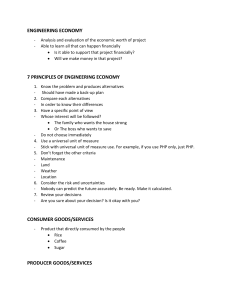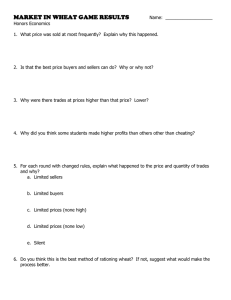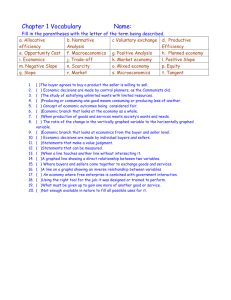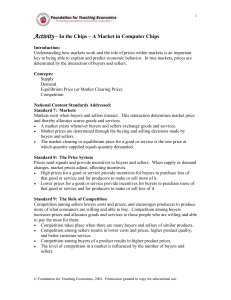Lemon Market Game Report: Asymmetric Information & Reputation
advertisement
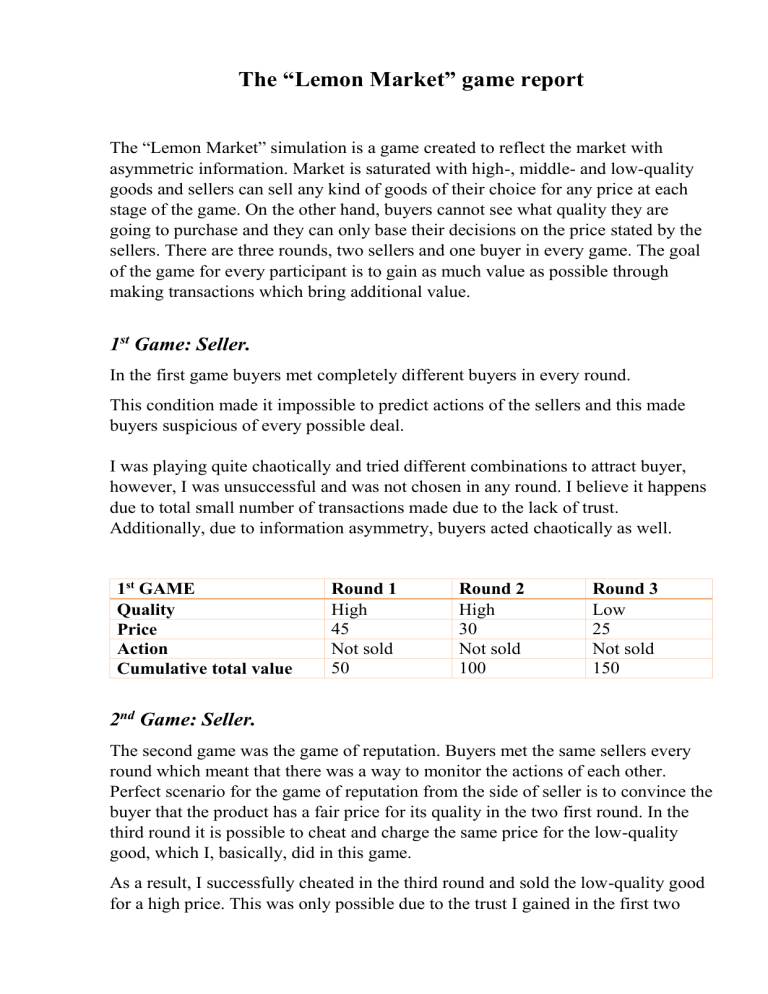
The “Lemon Market” game report The “Lemon Market” simulation is a game created to reflect the market with asymmetric information. Market is saturated with high-, middle- and low-quality goods and sellers can sell any kind of goods of their choice for any price at each stage of the game. On the other hand, buyers cannot see what quality they are going to purchase and they can only base their decisions on the price stated by the sellers. There are three rounds, two sellers and one buyer in every game. The goal of the game for every participant is to gain as much value as possible through making transactions which bring additional value. 1st Game: Seller. In the first game buyers met completely different buyers in every round. This condition made it impossible to predict actions of the sellers and this made buyers suspicious of every possible deal. I was playing quite chaotically and tried different combinations to attract buyer, however, I was unsuccessful and was not chosen in any round. I believe it happens due to total small number of transactions made due to the lack of trust. Additionally, due to information asymmetry, buyers acted chaotically as well. 1st GAME Quality Price Action Cumulative total value Round 1 High 45 Not sold 50 Round 2 High 30 Not sold 100 Round 3 Low 25 Not sold 150 2nd Game: Seller. The second game was the game of reputation. Buyers met the same sellers every round which meant that there was a way to monitor the actions of each other. Perfect scenario for the game of reputation from the side of seller is to convince the buyer that the product has a fair price for its quality in the two first round. In the third round it is possible to cheat and charge the same price for the low-quality good, which I, basically, did in this game. As a result, I successfully cheated in the third round and sold the low-quality good for a high price. This was only possible due to the trust I gained in the first two rounds. 2nd GAME Quality Price Action Cumulative total value Round 1 High 40 Sold 60 Round 2 High 40 Sold 120 Round 3 Low 40 Sold 200 3rd Game: Buyer The third game was also a game of reputation. This time I was the buyer and I expected the same actions from the sellers that I have performed in the second game. This is why in first two round I have safely bought medium- and highquality goods and in the third one I did not buy anything because I knew there would be cheating. 3rd GAME Quality Price Action Cumulative total value Round 1 Medium 24 Bought 56 Round 2 High 33 Bought 118 Round 3 Not bought 168 Conclusion for all three games: Generally, it was much easier to sell high-price and high-quality goods in the game of reputation rather than in the random one. Buyers of the random game tend to be more cautious and would rather go for low-priced goods with lower risks.


